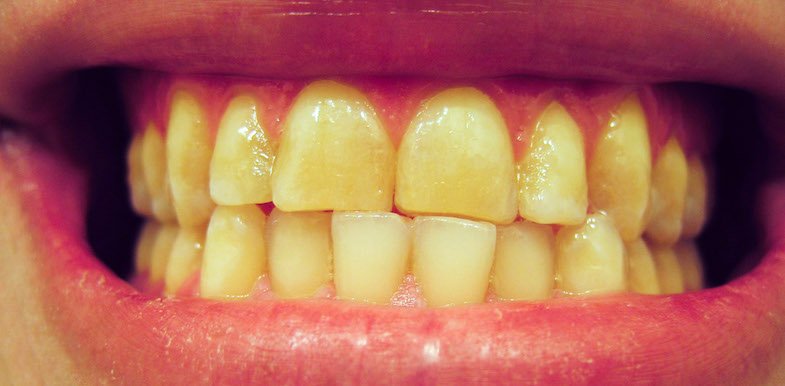A bright, even smile is a beautiful thing. However, sometimes a nearly imperceptible shift in the way our front teeth align can affect our smile. Even more serious, this shift can change our bite, potentially leading to serious dental complications in the future. What is this dental midline shift, what causes it, and what are your treatment options?
What is a dental midline shift?
The dental midline is essentially the dividing line between one side of your face and the other. It is the line between the two center teeth in the top of your mouth and the two center teeth in the bottom, one on top of the other when you bite down. These lines should also exactly bisect your nose and the space between your eyebrows.
A dental midline shift is when this line displays some asymmetry; the line between the top teeth does not sit directly over the line between the bottom teeth. This shift can be barely noticeable or quite obvious.
Even if the appearance of a dental midline shift doesn’t worry you cosmetically, the physical effects can be problematic. Proper alignment of all the teeth dictates how a person’s bite will function. In the case of midline shift teeth, the back of the jaw can be affected. This misalignment can cause other dental issues, such as uneven wear that can lead to cavity, cracks, or accidental bruxism (grinding of the teeth) as you eat.
What causes a dental midline shift?
There are several causes of dental midline shift. These midline shift teeth causes can even begin in infancy.
Premature loss of baby teeth
Baby teeth are important placeholders for adult teeth. When they fall out prematurely, they can allow the entire structure of the mouth to shift one way or another as adult teeth erupt.
Congenitally missing teeth
Similar to premature loss of baby teeth, congenitally missing teeth can also cause dental midline shift.
Bad habits
Prolonged thumb-sucking or extended use of a pacifier are midline shift causes that can be prevented by simply changing the habit in time. (Easier said than done when it comes to taking away pacifiers and monitoring thumb-sucking!)
Other dental trauma
Dental trauma is a broad category that can include:
- Other dental work
- Teeth that have succumbed to disease and need to be extracted
- Any other issues with the teeth that may promote uneven chewing
Over time, this chewing changes the way the teeth fit together and causes dental midline shift.
In some cases, dental midline shift can even occur after orthodontia if retainers or other appliances (e.g., headgear) are not used as directed. Teeth will naturally want to move and shift. It is important to follow any aftercare instructions provided by your orthodontist.
How can I correct a dental midline shift?
While dental midline shift is common, there are many effective treatment options for dental midline correction. These include:
- Invisalign
- Braces and elastics
- Hyrax expander
- Extraction
- Surgery, in severe cases
Invisalign
In general, Invisalign is most effective at simply straightening teeth, but there is some evidence that they can be used as midline shift braces for certain cases.
If a patient’s back bite is properly aligned but the front teeth are shifted, Invisalign may be a good choice.
Braces
Midline shift braces have several components that can be used to treat dental midline shift.
The placement of brackets and wire can help to realign teeth, and other appliances such as headgear worn at night can assist as well.
Elastics
Elastics are often used in conjunction with traditional braces to help correct dental midline shift. In many cases, front cross elastics that reach from one corner of the top teeth to the opposite corner of the bottom will help to gradually shift the midline back to its proper alignment.
Many patients will wear these at night, but for severe dental midline correction they may be also be worn during the day. The best outcomes for correcting a midline dental shift are seen in those patients who follow treatment protocols to the letter. Skipping a day every now and then can add up to months of additional treatment time.
Hyrax expander
A Hyrax expander is attached to the teeth and positioned in the roof of the mouth to expand the entire upper jaw. The expander then holds this position so that the teeth (and the person wearing the expander!) have a chance to adapt to their new position.
Patients wear the expander for anywhere from three to nine months. They can gradually open the upper palate by using a key to widen the appliance.
Extraction
In some cases, strategic tooth extraction will correct dental midline shift. When a space opens up in the mouth and a tooth is extracted, other teeth shift to fill the gap. This may be used in conjunction with the other treatments above.
In extreme cases where dental midline shift occurs after all teeth are in and the cause seems to be structural rather than movement of the teeth through the soft tissue, surgery may be needed to correct the problem. This is rare, and most dentists will exhaust all other possible treatments before surgery.
What can I expect after treatment?
After treatment for dental midline shift, you should see a noticeable improvement in the symmetry of your smile. Your dentist may have instructions for continued use of retainers, elastics, or other treatments to maintain this symmetry. It is important to follow their instructions to ensure your teeth stay properly aligned.
It is also important to remember that our faces are not exactly symmetrical and results may vary. The most important correction will be the restoration of a proper bite that is healthy and a smile that matches your individual features.
If you look in the mirror and notice a dental midline shift, contact AZ Dentist, your Phoenix area cosmetic dentist. We can help evaluate your smile and talk to you about all of your options.
